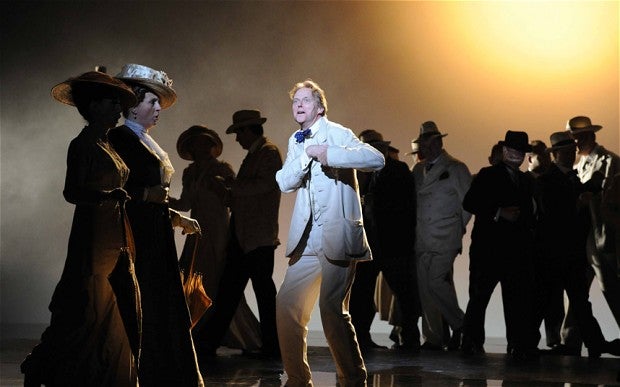Classical review: Deborah Warner's ENO Death in Venice is brilliantly revived
Death in Venice, Coliseum, London

Thomas Mann’s novella about the impossible love which springs in the breast of a blocked middle-aged writer as he watches a beautiful boy cavorting on the beach offered the perfect vehicle for Britten’s final opera.
This would be a summation of his art, and at the same time be a homage to his muse Peter Pears. Britten knew he was dying, and told his doctors that he would undergo the heart operation he needed provided they let him finish the opera first.
Britten cast it in cinematic form as a sequence of short scenes, giving each its own musical colouring, and that is how Deborah Warner’s production works. Revived after a six-year gap and fluently conducted by Edward Gardner, this show has settled marvellously: I can’t imagine a more exquisitely achieved marriage of music, drama, and design. Lit by Jean Kalman, Tom Pye’s sets evoke the rain-swept steamer, the opulent hotel, and the infinite space stretching beyond the beach with a graceful simplicity; we really do feel as though we’re at the end of the world. And the lighting changes are extraordinary: from Aschenbach’s liberating vision as Tadzio and his friends are silhouetted against a blinding brightness, to the sickly, sulphurous, yellow light which suffuses the stage as cholera takes hold.
The central performances are stunning. The default-mode in portrayals of the protagonist has long been to echo Dirk Bogarde in Visconti’s film, but here we get Aschenbach as Peter O’Toole might have played him, with an edgy anger against life turning into ecstatic excitement, before a very physical succumbing to disease.
For two unbroken hours John Graham-Hall brilliantly holds the stage, utterly believable and with every phrase pellucidly clear. Complementing his heroic performance is an equally notable one by ENO stalwart Andrew Shore, who incarnates seven figures including the elderly fop, the barber, the hotel manager, and the commedia dell’arte clown, with vivid characterisation each time; counter-tenor Tim Mead’s Voice of Apollo cuts through the opera like cold steel.
Meanwhile Sam Zaldivar’s Tadzio is as definitively right as Bjorn Andresen was in the film: whether doing slow pirouettes or whirling no-hands cartwheels, he possesses a more perfect line than any young dancer-gymnast has a right to. Kim Brandstrup’s choreography is a delight: even something as simple-seeming as three small girls running in irregular formation across the beach is both precisely choreographed and made to look carelessly natural. A flawless evening.
Join our commenting forum
Join thought-provoking conversations, follow other Independent readers and see their replies
Comments
Bookmark popover
Removed from bookmarks